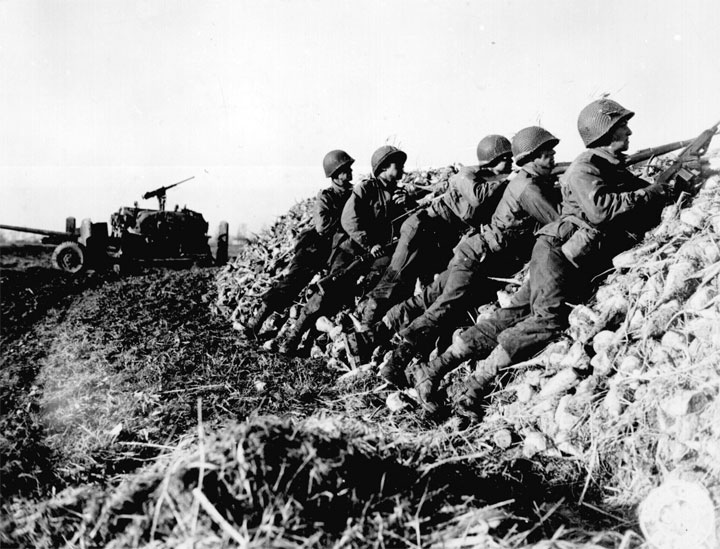September 17-25th Operation Market Garden Fails

American troops in the Netherlands
After liberating Antwerp and Brussels, Belgium, the Allies planned a very ambitious operation to capture the bridges over the Rhine. The hope was this would allow them to finish the war by Christmas. The plan made the largest use of paratroops by the Allies during the war and entailed the seizing of key bridges over the Maas and Rhine Rivers. A number of bridges were captured but a key to the plan was the British 1st Airborne Divisions capture of the Arnhem Bridge. They were to hold the bridge until advancing ground forces could reinforce them. They encountered greater then expected opposition and the ground forces were delayed. The attackers were overrun by September 1st.After the Allied victories in Normandy and their landings in Southern France the German withdrew back towards Germany. There was a major disagreement among allied planners on how to bring the war to an end. One of the major limiting factors was the ability of the allies to supply their troops as they moved further and further from the Normandy beaches. The Americans wanted to maintain as broad a front against the Germans believing that would force them to collapse, while the British led by Montgomery wanted a narrow push to break through across the Rhine and bring about a collapse. General Eisenhower reluctantly agreed to a audacious plan by Montgomery to use airborne troops to seize a series of bridges that would take Allied troops across the Rhine. The plan called for ground troops to rapidly link up with the Paratroopers holding the bridges. The goal was to leap across the Netherlands and then outflank the Germans the North
The first day of the campaign was September 17th and almost all the airborne landing were successful landing most of the troops close to their intended drop zones. Four out of five of the river crossing were captured in the south. The one bridge not captured was the bridgett Nijmegen. The last bridge in the chain at Arnhem was the most problematic, it was over the Rhine. In the initial landing not enough troops arrived at the location and found heavier then expected opposition.
The key of the success of the mission was for the ground forces to quickly move across the bridges that were captured and reach Arnhem. Unfortunately for the allies they encountered too many obstacles and too heavy opposition to do that. The delay in capturing the bridge at Nijmegen was critical and it soon became clear that the troops would not reach Arnhem in time to relieve the British troops that were encountering more and more attacks from German troops. By day 9th the Allies did their best to withdraw their troops.
Market Garden was one of the most disastrous Allied offensives of the war. There were a total of between 15,3236-17,200 casualties, the overwhelming number of them form the 1st Airborne Division.
 >
>